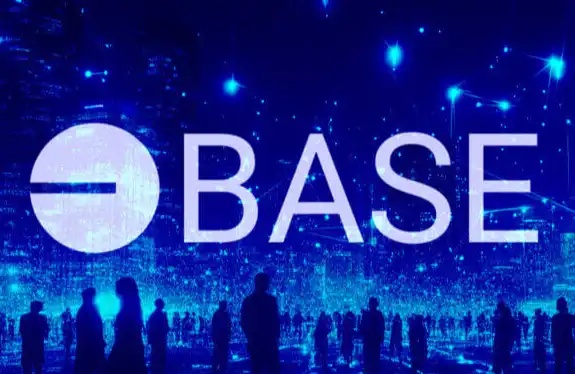Base Conference Express: From Superchain to Super App
At 6 a.m. on July 17, Base held a long-awaited pre-launch event.
The update regarding Base Chain itself was not complicated. The chain's performance has been improved by 10x, and the logo has changed from a circle to a square. What is truly worth noting is that Coinbase Wallet has been updated to The Base App, a highly anticipated new entry product.
This means that Base is no longer satisfied with being just a "user-friendly chain"; it has started to build a traffic entry point itself and actively participate in shaping the user journey. With control over both the underlying infrastructure and the entry point, Base is one of the very few L2 projects at this stage that can achieve this.
From Superchain to Super App
Base has always emphasized itself as part of the Superchain, a reusable, scalable, composable general-purpose L2. However, both in terms of technical roadmap and ecosystem strategy, Base appears to be moving away from a purely foundational role and transitioning to become a platform operator.
The Base App is the result of this transformation. It is no longer a "wallet" tool in the traditional sense but is attempting to integrate on-chain identity, transactions, social interaction, payments, AI Agent, and other modules to form a unified entry point. In terms of design philosophy, it is closer to integrated products like WeChat and Telegram rather than asset management tools like MetaMask or Rainbow.
In other words, Base not only aims to be a place where applications can be deployed but also hopes to be the interface that users see when they enter Web3 for the first time.
This strategic shift signifies that the boundary between "being infrastructure" and "being a user product" is becoming blurred. BlockBeats previously received the qualification to experience the app's closed beta. The review article is available at: "Faster than Twitter, the new Coinbase Wallet evolves into WeChat"
Why Build the Entry Point Themselves?
The reason Base launched The Base App is not because the chain itself has a significant bottleneck but because the entire L2 market has entered a phase of homogenization.
Performance is no longer the sole determining factor of competitiveness, as most projects have sufficient throughput. Instead, the key to differentiation lies in who can handle the traffic and build a complete user path.
Web3 has always lacked a default entry point, with each component trying to independently tackle onboarding, but the actual results have not been ideal.
In this context, Base chose to take matters into its own hands and create an entry point, with practical considerations in mind:
Coinbase itself already has a consumer-facing base, with capabilities such as compliance, payments, and fiat onramp, making it one of the institutions closest to an "application distribution platform";
Instead of waiting for developers to organically build, it's better to first construct a set of reference paradigms to form a product-centric cycle;
Compared to using subsidies or airdrops to obtain traffic, creating a high-frequency entry point provides longer-term user value.
For any chain looking to build an ecosystem, not having control of the entry point is akin to giving up control. Base's choice to build its own entry point can be understood as a longer-term decision made at this current stage.
A Noteworthy Use Case: Integration of AI Agent and Social Features
Although The Base App's mainline updates did not particularly emphasize AI capabilities, when introducing the social module and mini-app architecture, it mentioned a noteworthy feature integration: using an AI Agent in a chat scenario to interact with on-chain assets.
In the demonstration, users can directly input natural language into the chat box, such as "split last week's trip expenses with AA," and the AI Agent is able to identify the conversation object, calculate the amount due, and automatically trigger the wallet to complete the payment. The entire process does not require a UI switch and does not rely on an external dApp.

From a user experience perspective, this is a compression of the on-chain operation path; from a technical architecture perspective, it is a deep integration between a self-custodial wallet and a natural language system. Its feasibility depends on three conditions being met simultaneously:
User assets are self-custodied and can be authorized for Agent execution;
Chat and asset modules are interconnected, with a unified account system;
The Agent can understand natural language semantics and map them to on-chain operations.
Such functionality is not new. Previous projects have also attempted to combine an AI Agent with on-chain transactions, but most have focused on areas such as trading, market analysis, and investment research assistants, with a bias towards individual investors' high-frequency operations. In contrast, The Base App embeds this functionality in the social module, which is closer to financial collaboration within real social relationships and more aligned with daily needs.
Although this pathway is still in its early stages, it does demonstrate a possibility: the interactive nature of Web3 is shifting from "click-based operations" to "natural language commands".
Technologies such as Account Abstraction and MPC wallets optimize for execution efficiency, while designs like The Base App attempt to more closely resemble a restructuring of the user path itself, targeting the cognitive threshold.
The Battle for Web3's Gateway is Rekindling
Those aiming to be gateways are clearly not limited to just Base. However, as of now, these gateways either lack a solid user base, have incomplete scenario setups, or lack execution capability. Base has a key variable: Coinbase.
Coinbase possesses a user base of nearly a hundred million on one hand and can bridge fiat onramps with on-chain accounts on the other, providing Base App with a complete closed-loop system—technology, users, payments, transactions, deposits, and withdrawals, all interconnected.
At the core of the gateway battle is the struggle for scenario primacy. Whoever can define how users interact with Web3 on a daily basis is entitled to reshape the industry's order.
In the current lack of a new narrative in Web3, the shift in product form may be the new narrative itself.
Base's launch event is not complex, but it sends a clear signal: the competition between blockchains is transitioning from "chain capabilities" to "gateway capabilities".
Base takes the initiative, building a complete loop from the app to the chain, not for momentary traffic, but for longer-term user path dominance.
It may not immediately become the "WeChat of Web3," and may not even change user habits in the short term. However, it at least shows us that there are many blank areas between infrastructure and user products that can be filled.
When "who owns the gateway" becomes the new consensus starting point, the competition between blockchains will also enter a new phase.
Welcome to join the official BlockBeats community:
Telegram Subscription Group: https://t.me/theblockbeats
Telegram Discussion Group: https://t.me/BlockBeats_App
Official Twitter Account: https://twitter.com/BlockBeatsAsia


 Forum
Forum Finance
Finance
 Specials
Specials
 On-chain Eco
On-chain Eco
 Entry
Entry
 Podcasts
Podcasts
 Activities
Activities
 OPRR
OPRR












